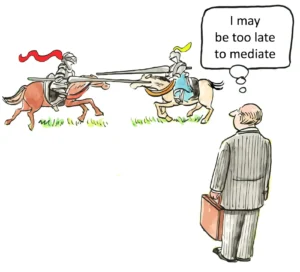How Do Legal Systems Across Countries Handle Organized Crime?
The fight against global organized crime laws represents one of the most significant challenges facing sovereign nations in the modern era. Legal systems worldwide have developed varied approaches to combat the sophisticated networks of criminal organizations that operate across national boundaries. These transnational entities exploit jurisdictional differences, weak governance structures, and corruption to conduct illicit activities ranging from drug trafficking to human smuggling. Understanding how different countries approach this challenge reveals important distinctions in legal philosophy, enforcement capabilities, and international cooperation frameworks. The effectiveness of these diverse approaches ultimately determines a nation’s resilience against the persistent threat of organized criminal enterprises that undermine economic stability, public safety, and governmental legitimacy.
The United Nations Convention Against Transnational Organized Crime
The primary international legal framework addressing transnational organized crime is the United Nations Convention Against Transnational Organized Crime (UNTOC), also known as the Palermo Convention. Adopted in 2000 and entering into force in 2003, this landmark treaty represents the first globally binding instrument specifically targeting organized criminal networks that operate across borders.
The UNTOC establishes a common definition of an organized criminal group as “a structured group of three or more persons, existing for a period of time and acting in concert with the aim of committing one or more serious crimes or offenses established in accordance with this Convention, in order to obtain, directly or indirectly, a financial or other material benefit.” This definition provides the foundation for international cooperation by creating a shared understanding of what constitutes organized crime, regardless of cultural or legal differences between nations.
Significantly, the Convention obliges signatory states to criminalize participation in organized criminal groups, money laundering, corruption, and obstruction of justice. These provisions aim to harmonize national legislation and close legal loopholes that criminal networks exploit. The UNTOC also establishes frameworks for extradition, mutual legal assistance, and law enforcement cooperation, creating mechanisms through which countries can work together despite differences in their domestic legal systems. With 192 parties as of October 2023, the Convention represents a near-universal commitment to combating transnational criminal enterprises through coordinated legal approaches.
Common Law vs. Civil Law Approaches
The fundamental legal tradition of a country significantly influences how it addresses organized crime legislation. The two predominant legal systems worldwide—common law and civil law—approach criminal organizations with distinct methodologies that reflect their broader philosophical differences.
Common law jurisdictions, including the United States, United Kingdom, and many Commonwealth nations, typically employ a case-by-case approach to organized crime. These systems often rely on conspiracy laws, racketeering statutes, and precedent-based interpretations to prosecute criminal organizations. The U.S. Racketeer Influenced and Corrupt Organizations Act (RICO) exemplifies this approach, allowing prosecutors to target entire criminal enterprises rather than individual crimes. RICO enables authorities to connect seemingly disparate criminal acts under the umbrella of a continuing criminal enterprise, facilitating the prosecution of organization leaders who might otherwise remain insulated from direct criminal activity.
Civil law countries, which include most of continental Europe, Latin America, and parts of Asia, generally take a more codified approach to combating organized crime. These systems typically enact comprehensive criminal codes that specifically define and criminalize participation in criminal organizations. Italy’s Anti-Mafia Code represents one of the most developed examples, with detailed provisions specifically targeting mafia-type associations. This code defines such organizations by their use of intimidation, subjugation, and a code of silence to commit crimes and gain control over economic activities. The civil law approach provides clear statutory definitions but may offer less flexibility than common law systems in addressing novel criminal methodologies.
The Italian Model: Pioneering Anti-Mafia Legislation
Italy’s legal framework for combating mafia-style groups stands as one of the most comprehensive and battle-tested systems in the world. Forged through decades of struggle against powerful criminal organizations like Cosa Nostra, ‘Ndrangheta, Camorra, and Sacra Corona Unita, the Italian approach offers valuable lessons for other nations confronting entrenched criminal networks.
The cornerstone of Italy’s anti-mafia legislation is Article 416-bis of the Italian Penal Code, introduced in 1982 following the assassination of prominent anti-mafia prosecutor Pio La Torre. This provision specifically criminalizes membership in a mafia-type organization, defined by the use of intimidation, subjugation, and omertà (code of silence). Crucially, this law allows prosecution based on organizational membership itself, rather than requiring proof of specific criminal acts. This approach recognizes the distinctive threat posed by mafia structures that can persist even when individual members are removed.
Italy has also pioneered asset forfeiture laws that target the economic foundations of criminal organizations. The Italian system allows for both criminal confiscation following conviction and preventive seizure based on reasonable suspicion that assets derive from illicit activities. This two-pronged approach has proven particularly effective against mafia groups that have deeply infiltrated the legitimate economy. Additionally, Italy established a specialized Anti-Mafia Directorate (Direzione Nazionale Antimafia) that coordinates investigations nationwide, ensuring that regional prosecutions benefit from national intelligence and expertise. This institutional structure has been instrumental in dismantling criminal networks that operate across multiple jurisdictions within the country.
The American RICO Approach
The United States has developed one of the most aggressive legal frameworks for combating criminal networks through the Racketeer Influenced and Corrupt Organizations Act (RICO). Enacted in 1970 as part of the Organized Crime Control Act, RICO has transformed how American prosecutors target criminal organizations by focusing on patterns of activity rather than isolated offenses.
RICO’s innovative approach allows prosecutors to charge individuals for participating in a “pattern of racketeering activity” connected to an “enterprise.” This enterprise concept encompasses both legitimate businesses infiltrated by criminal elements and purely illegal organizations. The statute defines racketeering activity through a list of predicate offenses including extortion, fraud, gambling, murder, and drug trafficking. By requiring only two predicate acts within a ten-year period to establish a pattern, RICO creates a powerful tool for connecting seemingly disparate crimes under a single prosecution.
The statute’s effectiveness stems partly from its severe penalties, including up to 20 years imprisonment per count, substantial fines, and comprehensive asset forfeiture provisions. These penalties create strong incentives for defendants to cooperate with authorities, often leading to evidence against higher-ranking members of criminal organizations. RICO also includes civil provisions allowing private parties harmed by racketeering activity to sue for triple damages, creating additional pressure on criminal enterprises. The law’s flexibility has enabled its application beyond traditional organized crime to street gangs, corrupt organizations, and even some legitimate businesses engaged in systematic illegal activity. This adaptability has made RICO a model studied by other nations seeking effective tools against evolving criminal threats.
European Union Coordination Mechanisms
The European Union has developed sophisticated law enforcement cooperation mechanisms to address the reality that criminal organizations readily exploit the bloc’s open borders. These coordination frameworks represent a unique approach to transnational crime that balances national sovereignty with the need for unified action.
Europol, the EU’s law enforcement agency, serves as the central hub for intelligence sharing and operational coordination against organized crime. Unlike a traditional police force, Europol does not have direct arrest powers but instead facilitates cooperation between national authorities. The agency maintains extensive databases on criminal networks, provides analytical support for cross-border investigations, and helps coordinate joint operations. Europol’s Serious and Organised Crime Threat Assessment (SOCTA) provides strategic analysis that guides EU-wide priorities and resource allocation in the fight against criminal organizations.
The European Arrest Warrant (EAW) system has dramatically streamlined extradition procedures between EU member states. This mechanism replaces traditional extradition processes with a simplified judicial surrender procedure, significantly reducing the time required to transfer suspects between jurisdictions. For organized crime investigations that frequently span multiple countries, this efficiency is crucial. Additionally, Joint Investigation Teams (JITs) allow police and prosecutors from different EU countries to work together directly on complex cases, sharing evidence without cumbersome mutual legal assistance procedures. These coordination mechanisms represent a pragmatic response to the reality that effective action against modern criminal networks requires international cooperation that matches the borderless nature of the threat itself.
Asian Approaches to Organized Crime
Asian nations confront distinctive challenges from criminal organizations that often reflect regional historical and cultural contexts. The legal approaches developed across Asia demonstrate both innovative solutions and persistent challenges in addressing these deeply rooted criminal networks.
Japan’s Anti-Boryokudan Law, enacted in 1991 and subsequently strengthened, represents a unique approach to combating the yakuza. Rather than criminalizing membership outright, the law designates certain groups as boryokudan (violent groups) and then restricts their activities, prohibits demands for money, and limits recruitment. This regulatory approach reflects Japan’s emphasis on social control and rehabilitation rather than purely punitive measures. The law has forced yakuza groups to adapt their operations but has not eliminated their presence, illustrating the resilience of entrenched criminal organizations even in highly regulated societies.
China has adopted increasingly stringent measures against organized crime through its campaign against “black societies” (hei shehui). The Criminal Law of the People’s Republic of China criminalizes organizing, leading, or participating in criminal syndicates, with penalties including life imprisonment or death for leaders. Recent years have seen intensified enforcement through the “Sweep Away Black and Eliminate Evil” campaign launched in 2018, which targeted both traditional triads and newer criminal networks. This approach reflects China’s emphasis on social stability and state authority, though critics note concerns about due process in the aggressive implementation of these measures.
Southeast Asian nations like Thailand, the Philippines, and Indonesia face significant challenges from organized crime amid resource constraints and governance challenges. These countries have generally adopted specialized legislation criminalizing participation in criminal organizations, often modeled on international standards. However, implementation frequently suffers from corruption, limited institutional capacity, and competing priorities. Regional cooperation through ASEAN mechanisms has improved in recent years but remains less developed than European frameworks, highlighting the importance of building effective transnational coordination suited to regional contexts.
Latin American Innovations and Challenges
Latin American countries face some of the world’s most powerful and violent criminal organizations, necessitating innovative legal approaches despite significant institutional challenges. The region’s responses to organized crime reflect both creative adaptations and persistent obstacles to effective enforcement.
Colombia pioneered specialized prosecution units and witness protection programs during its prolonged conflict with drug cartels. The creation of the Specialized Directorate Against Organized Crime within the Attorney General’s Office centralized expertise and resources for complex investigations. Colombia also developed extensive plea bargaining mechanisms that incentivize cooperation from lower-level criminals, helping to dismantle organizational structures from within. These innovations have influenced legal approaches throughout the region, though Colombia continues to face challenges from evolving criminal networks.
Brazil’s approach to organized crime has evolved significantly with the rise of powerful prison-based gangs like Primeiro Comando da Capital (PCC) and Comando Vermelho. The Law of Criminal Organizations (Law 12,850/2013) expanded investigative tools available to authorities, including controlled deliveries, undercover operations, and access to telephone and financial records. The law also established collaboration agreements (delação premiada) that provide sentence reductions for cooperating defendants, similar to plea bargaining in the U.S. system. Despite these legal innovations, Brazil’s federal system creates coordination challenges between state and federal authorities that criminal organizations exploit.
Mexico’s legal framework has undergone substantial reforms in response to cartel violence, including the implementation of an adversarial criminal justice system and specialized high-security courts for organized crime cases. The Federal Law Against Organized Crime provides enhanced investigative powers and penalties for participation in criminal organizations. However, implementation has been hampered by institutional weaknesses, corruption, and the extraordinary violence employed by cartels against legal authorities. Mexico’s experience highlights that legal frameworks alone are insufficient without corresponding institutional capacity and integrity to implement them effectively.
Asset Forfeiture and Financial Investigations
Targeting the financial foundations of criminal organizations has emerged as a critical strategy in modern approaches to organized crime. Legal systems worldwide have increasingly developed asset forfeiture regimes that aim to deprive criminal networks of their illicit profits and economic power.
Criminal forfeiture, which requires a conviction before permanently seizing assets, represents the traditional approach used in most jurisdictions. This mechanism ensures due process protections but may allow criminal organizations to hide or transfer assets during lengthy prosecution processes. In response, many countries have developed civil or non-conviction-based forfeiture systems that lower the evidentiary threshold and shift the burden of proof. Italy’s preventive measures allow seizure based on reasonable suspicion that assets are disproportionate to legitimate income, while the UK’s Unexplained Wealth Orders require individuals to explain the legitimate source of suspicious assets or risk forfeiture.
Financial intelligence units (FIUs) have become central components of national strategies against organized crime. These specialized agencies analyze suspicious transaction reports from financial institutions to identify potential money laundering and provide intelligence for criminal investigations. The global network of FIUs coordinated through the Egmont Group facilitates international information sharing about suspicious financial flows, recognizing that modern money laundering frequently crosses multiple jurisdictions. This financial intelligence approach complements traditional law enforcement by following money trails that reveal organizational structures and leadership that might otherwise remain hidden from view.
Witness Protection and Collaboration Mechanisms
Securing testimony from insiders represents one of the most effective methods for penetrating the secretive structures of criminal organizations. Legal systems have developed various mechanisms to encourage and protect cooperation from witnesses who often face severe risks for breaking criminal codes of silence.
Comprehensive witness protection programs provide physical security, relocation, identity changes, and financial support for witnesses and their families. Italy’s witness protection system, developed during the maxi-trials against Cosa Nostra in the 1980s, has served as a model for many countries. These programs recognize that effective protection must extend beyond the trial itself, often providing lifetime security for the most significant witnesses against powerful criminal organizations. The substantial resources required for comprehensive witness protection represent a necessary investment in the justice system’s ability to penetrate criminal networks that enforce internal discipline through violence and intimidation.
Plea bargaining and cooperation agreements provide legal incentives for members of criminal organizations to provide evidence against associates. The U.S. system offers substantial sentence reductions for “substantial assistance” to authorities, creating powerful incentives for defendants facing lengthy mandatory sentences. Similar mechanisms have been adopted in various forms worldwide, including Italy’s pentiti system, Brazil’s delação premiada, and Colombia’s principle of opportunity. These legal tools recognize that insiders possess unique knowledge about organizational structures and leadership that may be unobtainable through other investigative means. However, they also raise complex questions about providing benefits to serious offenders and ensuring the reliability of testimony motivated by self-interest.
Specialized Courts and Prosecution Units
Many nations have established dedicated judicial and prosecutorial structures to address the unique challenges posed by organized crime cases. These specialized institutions develop expertise in complex legal issues and provide enhanced security for personnel handling high-risk prosecutions.
Specialized courts for organized crime cases exist in various forms across legal systems. Italy’s Anti-Mafia Courts feature enhanced security measures, specialized judges with experience in complex cases, and procedural adaptations for managing multi-defendant trials. Mexico has established Federal Centers of Justice specializing in organized crime with anonymous judges to reduce intimidation risks. These specialized judicial bodies can develop expertise in the complex legal and evidentiary issues common in organized crime prosecutions while implementing appropriate security measures for high-risk proceedings.
Dedicated prosecution units focused on organized crime have proven effective in many jurisdictions. The United States Organized Crime and Gang Section within the Department of Justice coordinates national strategy and supports complex prosecutions. Italy’s National Anti-Mafia Directorate (DNA) coordinates investigations nationwide and maintains centralized intelligence on criminal organizations. These specialized units allow prosecutors to develop deep expertise in relevant legal frameworks, investigative techniques, and the operational patterns of criminal networks. They also facilitate the coordination of cases that frequently span multiple jurisdictions, ensuring that prosecutorial efforts target entire criminal networks rather than isolated components.
International Cooperation Mechanisms
The transnational nature of modern criminal networks necessitates international cooperation that transcends traditional notions of sovereignty. Legal systems have developed various mechanisms to facilitate cross-border investigations and prosecutions while respecting national legal differences.
Extradition treaties provide the legal basis for transferring accused criminals between jurisdictions. Modern treaties have streamlined traditional extradition processes that often contained broad political offense exceptions and strict dual criminality requirements. The European Arrest Warrant system represents the most advanced model, replacing political decision-making with direct judicial cooperation. However, extradition remains challenging when dealing with countries that have fundamentally different legal systems or poor diplomatic relations, creating safe havens that organized crime groups strategically exploit.
Mutual Legal Assistance Treaties (MLATs) establish frameworks for sharing evidence and conducting investigative activities across borders. These agreements allow prosecutors to obtain evidence in foreign jurisdictions in a form admissible in their domestic courts. The effectiveness of MLATs varies significantly, with traditional mechanisms often involving time-consuming diplomatic channels that impede fast-moving investigations. In response, some regions have developed more efficient systems, such as the European Investigation Order, which applies mutual recognition principles to evidence gathering. Joint Investigation Teams (JITs) represent an even more integrated approach, allowing investigators from multiple countries to work together directly on complex transnational cases.
Corruption and Institutional Integrity
The effectiveness of legal frameworks against organized crime ultimately depends on the integrity of the institutions implementing them. Criminal organizations systematically attempt to corrupt law enforcement, judiciary, and political systems to neutralize legal threats and facilitate their operations.
Specialized anti-corruption measures within criminal justice systems have proven essential for effective action against powerful criminal organizations. Italy’s High Commissioner for the Fight against Corruption coordinates preventive measures and investigations targeting public corruption. Rotation policies for officials in sensitive positions reduce opportunities for developing corrupt relationships, while financial disclosure requirements help identify suspicious enrichment. Integrity testing and internal affairs units provide mechanisms to identify and remove corrupt officials before they can compromise major investigations. These institutional safeguards recognize that legal frameworks, however sophisticated, remain ineffective when implemented by compromised officials.
Judicial independence protections take on particular importance in organized crime cases involving powerful defendants with political connections. Special appointment and removal procedures for judges handling sensitive cases can reduce political interference. Physical security measures for judges, prosecutors, and their families are equally essential when criminal organizations resort to violence and intimidation. Countries with the most effective approaches to organized crime, such as Italy and the United States, have invested heavily in both the institutional independence and physical security of their judicial systems, recognizing that these represent necessary conditions for successfully challenging entrenched criminal power.
Preventive Measures and Community Resilience
Beyond traditional enforcement, effective legal systems increasingly incorporate preventive approaches that address the social and economic conditions enabling criminal organizations to flourish. These strategies recognize that purely punitive measures have limited effectiveness without addressing root causes.
Social prevention programs target vulnerable communities where criminal organizations recruit members and establish territorial control. Italy’s use of confiscated mafia assets for social purposes exemplifies this approach, converting seized properties into community centers, cooperative businesses, and educational facilities. These initiatives provide alternative economic opportunities while symbolically reclaiming spaces from criminal control. Educational programs that build resistance to criminal recruitment, particularly among youth, represent another preventive dimension increasingly incorporated into comprehensive strategies against organized crime.
Community involvement mechanisms formalize the role of civil society in opposing criminal organizations. Italy’s anti-racket associations provide collective protection for business owners resisting extortion, while witness reporting systems create protected channels for citizens to provide information without exposing themselves to retaliation. These approaches recognize that effective action against entrenched criminal organizations requires mobilizing broader social resistance rather than relying solely on law enforcement capabilities. The most successful models integrate preventive measures and community engagement with traditional enforcement, creating comprehensive strategies that address both symptoms and causes of organized criminal activity.
Emerging Challenges: Cybercrime and Cryptocurrency
Legal systems worldwide now confront the rapidly evolving challenge of criminal organizations operating in digital environments. Traditional approaches developed for physically-based criminal groups require significant adaptation to address these emerging threats.
Cybercrime legislation has expanded significantly as criminal networks increasingly operate online. Many jurisdictions have updated their legal frameworks to criminalize unauthorized access to computer systems, data theft, and digital extortion. The Budapest Convention on Cybercrime provides an international framework for harmonizing national laws and facilitating cross-border investigations. However, significant challenges remain in attributing digital crimes to specific organizations and individuals who can operate anonymously across multiple jurisdictions. The technical complexity of these investigations requires specialized expertise that many legal systems are still developing.
Cryptocurrency regulations represent a critical frontier as criminal organizations increasingly utilize digital assets for money laundering and illicit transactions. Legal approaches range from comprehensive licensing regimes for exchanges to outright prohibitions in some jurisdictions. The Financial Action Task Force (FATF) has established international standards requiring virtual asset service providers to implement anti-money laundering controls and report suspicious transactions. However, decentralized finance platforms and privacy-focused cryptocurrencies continue to challenge traditional regulatory approaches. Legal systems that effectively address these emerging technologies typically combine technical expertise with adaptable regulatory frameworks that can evolve alongside rapid technological change.
Measuring Effectiveness: The Global Organized Crime Index
Assessing how effectively different legal systems combat organized crime requires objective metrics that enable meaningful comparison across diverse national contexts. The Global Organized Crime Index represents one of the most comprehensive attempts to evaluate both the scope of criminal markets and countries’ resilience against them.
The Index evaluates countries on both criminality (the scope and scale of criminal markets and actors) and resilience (the capacity to withstand and disrupt organized criminal activities). This dual assessment recognizes that low visible crime may reflect either effective countermeasures or successful corruption and intimidation that suppresses reporting. The resilience metrics specifically evaluate legal frameworks, institutional capacity, economic regulatory environments, and non-state actors like civil society and the private sector. This multidimensional approach provides a more nuanced understanding than simplistic crime rate comparisons.
According to recent Index findings, countries with the highest resilience scores include Lithuania, the United States, Italy, and the United Kingdom, reflecting their comprehensive legal frameworks and institutional capabilities. However, even these nations continue to face significant challenges from adaptive criminal networks. The Index also identifies concerning patterns where high criminality scores coincide with low resilience, particularly in conflict-affected regions and countries with weak governance structures. These findings highlight the global nature of the challenge and the importance of international support for building effective legal frameworks in vulnerable regions that otherwise serve as operational bases for transnational criminal networks.
Conclusion: Toward More Effective Global Responses
The diverse approaches to organized crime legislation across legal systems worldwide reflect different historical experiences, legal traditions, and institutional capabilities. While no single model has proven universally applicable, certain common elements characterize the most effective frameworks.
Comprehensive legal approaches that combine specialized legislation, dedicated institutions, and international cooperation mechanisms have proven most effective against sophisticated criminal networks. These integrated strategies recognize that organized crime represents a multidimensional threat requiring responses that address both symptoms and causes. The most successful models balance aggressive enforcement with preventive measures that reduce the social and economic conditions enabling criminal organizations to recruit and operate.
International cooperation remains essential given the increasingly transnational nature of criminal networks. Countries that have developed effective domestic frameworks must also invest in building global partnerships that match the borderless operations of modern criminal organizations. This cooperation requires not only formal legal mechanisms but also practical coordination, information sharing, and capacity building to support jurisdictions with less developed institutional capabilities.
The ongoing evolution of organized crime into digital spaces and new criminal markets demands continuous legal adaptation. Legal systems that build flexibility and technical expertise into their frameworks position themselves to address emerging threats more effectively than those relying on rigid structures designed for traditional criminal models. This adaptability, combined with strong institutional integrity and international cooperation, represents the foundation for effective responses to the persistent and evolving challenge of organized criminal networks worldwide.
Citations:
- https://unicri.org/sites/default/files/2019-10/UNICRI_Organized_Crime_and_Legal_Economy_report.pdf
- https://ocindex.net/rankings/national_policies_and_laws
- https://www.sipri.org/commentary/topical-backgrounder/2022/transnational-organized-crime-threat-global-public-goods
- https://en.wikipedia.org/wiki/United_Nations_Convention_Against_Transnational_Organized_Crime
- https://ir.canterbury.ac.nz/bitstream/handle/10092/101209/Law%20Enforcement%20Cooperation%20through%20the%20UNTOC%20Boister.pdf?sequence=2
- https://ojp.gov/ncjrs/virtual-library/abstracts/transnational-organized-crime-and-role-extradition-mutual-legal
- https://www.rasmussen.edu/degrees/justice-studies/blog/organized-crime-cases/
- https://www.interpol.int/en/Crimes/Organized-crime
- https://www.justice.gc.ca/eng/rp-pr/csj-sjc/jsp-sjp/rr05_5/p5.html
- http://unis.unvienna.org/pdf/05-82099_E_2_pr_SFS.pdf
- https://www.bakerinstitute.org/research/globalization-organized-crime
- https://themobmuseum.org/blog/organized-crime-in-europe-a-country-by-country-breakdown/
- https://eucrim.eu/articles/human-rights-based-approach-combat-transnational-crime/
- https://www.unodc.org/unodc/en/organized-crime/intro/UNTOC.html
- https://obamawhitehouse.archives.gov/administration/eop/nsc/transnational-crime/introduction
- https://en.wikipedia.org/wiki/Organized_crime
- https://www.justice.gov/nsd-ovt/international-legal-systems-introduction
- https://ocindex.net
- https://connections-qj.org/article/global-dimensions-organized-crime-and-ways-preventing-threats-international-level
- https://www.unodc.org/toc/en/crimes/organized-crime.html
- https://www.unodc.org/corruption/en/country-profiles/view/search.html
- https://www.unodc.org/e4j/en/organized-crime/module-16/key-issues/organized-crime-international-framework—the-organized-crime-convention-and-its-protocols.html
- https://globalinitiative.net/analysis/global-strategy-against-organized-crime/
- https://globalinitiative.net/wp-content/uploads/2021/09/GITOC-Global-Organized-Crime-Index-2021.pdf
- https://www.msiworldwide.com/story/strengthening-rule-of-law-approaches-to-address-organized-crime/
- https://www.unodc.org/e4j/en/organized-crime/module-8/key-issues/jurisdictions.html
- https://treaties.un.org/pages/viewdetails.aspx?src=treaty&mtdsg_no=xviii-12&chapter=18&clang=_en
- https://www.unodc.org/unodc/en/organized-crime/intro/conference-of-the-parties.html
- https://www.iawj.org/content.aspx?page_id=2507&club_id=882224&item_id=5522
- https://globalinitiative.net/wp-content/uploads/2024/10/Is-the-UNTOC-working_-An-assessment-of-the-implementation-and-impact-of-the-Palermo-Convention-GI-TOC-October-2024.v3.pdf
- https://www.muscalaw.com/blog/understanding-united-states-extradition-laws
- https://www.congress.gov/treaty-document/108th-congress/16/document-text
- https://www.eeas.europa.eu/delegations/vienna-international-organisations/celebrating-20th-anniversary-united-nations-convention-against-transnational-organised-crime-untoc_und_en
- https://www.oas.org/juridico/english/treaties/b-47.html
- https://globalinitiative.net/analysis/is-the-untoc-working/
- https://www.usip.org/sites/default/files/MC2/MC2-21-Ch14.pdf
- https://www.unodc.org/documents/middleeastandnorthafrica/organised-crime/UNITED_NATIONS_CONVENTION_AGAINST_TRANSNATIONAL_ORGANIZED_CRIME_AND_THE_PROTOCOLS_THERETO.pdf
- https://www.unodc.org/e4j/zh/organized-crime/module-11/key-issues/extradition.html
- https://www.fbi.gov/investigate/transnational-organized-crime/major-cases
- https://www.unodc.org/e4j/en/organized-crime/module-8/exercises/case-studies.html
- https://ocindex.net/report/2023/04-continental-overview.html
- https://www.justice.gov/criminal/criminal-vcrs/international-organized-crime
- https://www.unodc.org/e4j/en/organized-crime/module-7/exercises/case-studies.html
- https://ocindex.net/2021/rankings/mafia-style_groups?y=2021&f=rankings&view=List
- https://www.fbi.gov/investigate/transnational-organized-crime
- https://www.cdpp.gov.au/case-reports
- https://www.unodc.org/documents/organized-crime/EnglishDigest_Final301012_30102012.pdf
- https://www.youtube.com/watch?v=vzviSYCM3-E
- https://www.unodc.org/unodc/en/humanrights/areas/organized-crime.html
- https://www.unodc.org/documents/data-and-analysis/statistics/crime/ICCS/ICCS_Brief_3_Organized_Crime_2023.pdf
- https://sherloc.unodc.org/cld/en/education/tertiary/organized-crime/module-12/key-issues/organized-crime-approaches.html
- https://scholarlycommons.law.northwestern.edu/context/jclc/article/5118/viewcontent/65_53JCrimLCriminology_PoliceSci399_1962_.pdf
- https://pmc.ncbi.nlm.nih.gov/articles/PMC6954028/
- https://ndupress.ndu.edu/Media/News/News-Article-View/Article/3512123/organized-crime-as-irregular-warfare-strategic-lessons-for-assessment-and-respo/
- https://uat.bjs.ojp.gov/library/publications/local-prosecution-organized-crime-use-state-rico-racketeer-influenced-and
- https://www.ojp.gov/ncjrs/virtual-library/abstracts/measuring-effectiveness-organized-crime-control-efforts-0
- https://home-affairs.ec.europa.eu/policies/internal-security/organised-crime-and-human-trafficking_en
- https://www.justice.gov/jm/jm-9-15000-international-extradition-and-related-matters
- https://ocindex.net/crime/international_cooperation
- https://fam.state.gov/fam/07fam/07fam1610.html
- https://www.ojp.gov/ncjrs/virtual-library/abstracts/united-nations-convention-against-transnational-organized-crime-0
- https://obamawhitehouse.archives.gov/administration/eop/nsc/transnational-crime/strengthen-interdiction
- https://polarisproject.org/financial-crime-case-studies/
- https://www.unodc.org/documents/data-and-analysis/gsh/2023/GSH_2023_LAC_web.pdf
- https://www.oas.org/ext/en/main/oas/our-structure/gs/sms/dtoc
- https://www.unodc.org/unodc/en/organized-crime/intro.html
- https://www.justice.gov/archive/ag/annualreports/ar95/chapter1.htm
- https://www.aic.gov.au/sites/default/files/2022-06/ti652_regulatory_approaches_to_preventing_organised_crime_among_outlaw_motorcycle_gangs.pdf
- https://sgp.fas.org/crs/misc/R40525.pdf
- https://obamawhitehouse.archives.gov/administration/eop/nsc/transnational-crime/strategy













